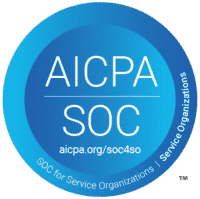Assessment is one of the most powerful means by which teachers can influence how students learn. Among other things, it determines student effort, focus on particular content, and a student’s ultimate performance.
We can distinguish between formative assessment (or “assessment for learning”) and summative assessment (“assessment of learning”). In assessment for learning, you collect information about the learning process, with the intention of using it to help students move forward. Sufficient formative feedback at multiple points in time ensures that students can make timely adjustments to their learning. Assessment of learning involves determining what students have learned, which involves level determination and selection (pass/fail). In Higher Education, much attention is paid to the summative side of testing, as this is related to the final level of education achieved. However, it is very important to also make good use of the formative function of testing (assessment for learning), among other things because of its positive effect on study progress. It helps to activate students and leads to less procrastination.
FeedPulse can be used as an instrument for formative assessment. Based on clearly formulated learning objectives, interaction with the student takes place several times during a period. Here the student is informed about what is expected of him (feed-up), the extent to which he has mastered the learning objective (feedback) and what he can do to improve his performance (feed-forward). The tool activates students because they have to process their feedback themselves, this makes the feedback more meaningful and becomes part of the learning process. Feedback helps students assess their own progress and determine how best to continue studying. The teacher’s interim formative assessments, in terms of positive, neutral or negative, encourages students to continuously improve their performance.
The testing policy can include measures taken to monitor and promote the quality of testing. FeedPulse can be part of this if a program considers it important that assessment is an essential part of the learning process and is inextricably linked to the content of the education.
When deciding to make FeedPulse part of the assessment policy, it is important not to blindly sum the results of formative assessment in FeedPulse to a judgment for summative assessment. Experience shows that students may feel inhibited in noting feedback and reflection on their own learning when it appears that formative assessment moments are included in the final assessment. We therefore advocate that formative assessment should retain its previously mentioned function. This means that the ownership of the learning process should remain with the student as much as possible. This way you stimulate self-regulation and intrinsic motivation of the student to keep developing.
Ultimately, the manner of testing and testing criteria (derived from the learning objectives) in both formative testing and summative testing must be explicit and transparent to the student.
Apart from formative testing, the final assessment (assessment of learning) must adequately test whether all learning objectives have been met. This means that the student’s assessment, the decisions that must be made about it, and the feedback that students receive are considered in light of the course’s learning objectives and learning outcomes.



